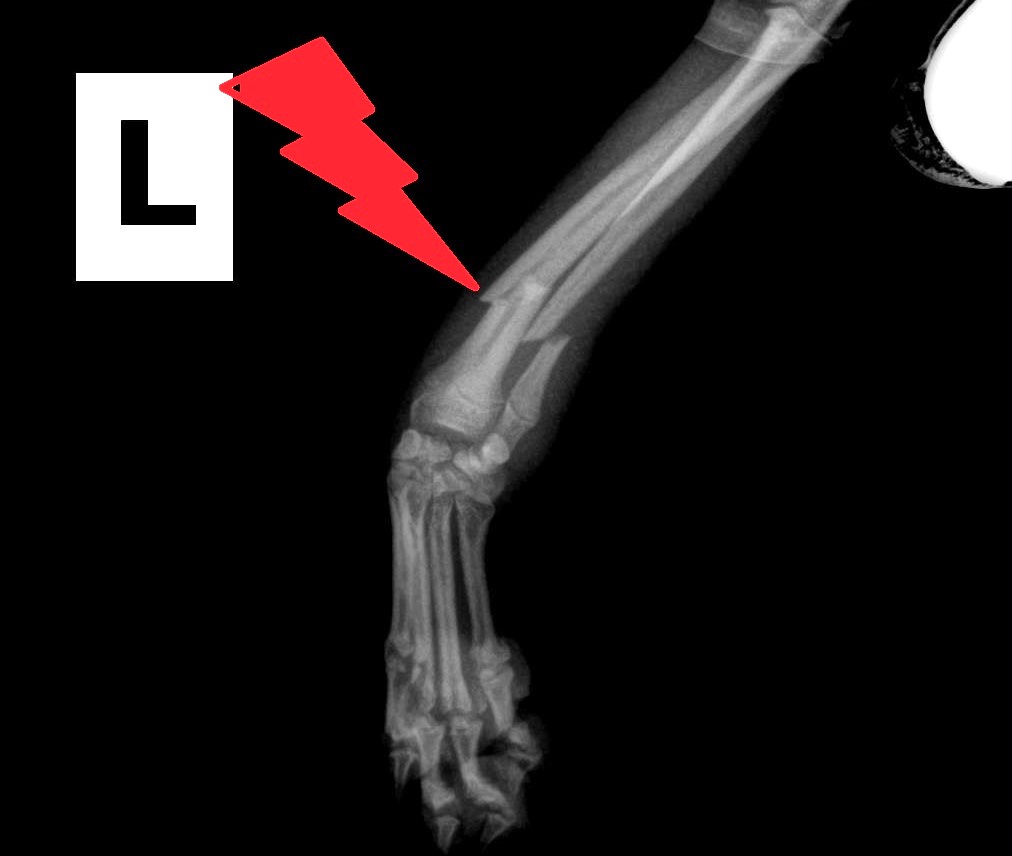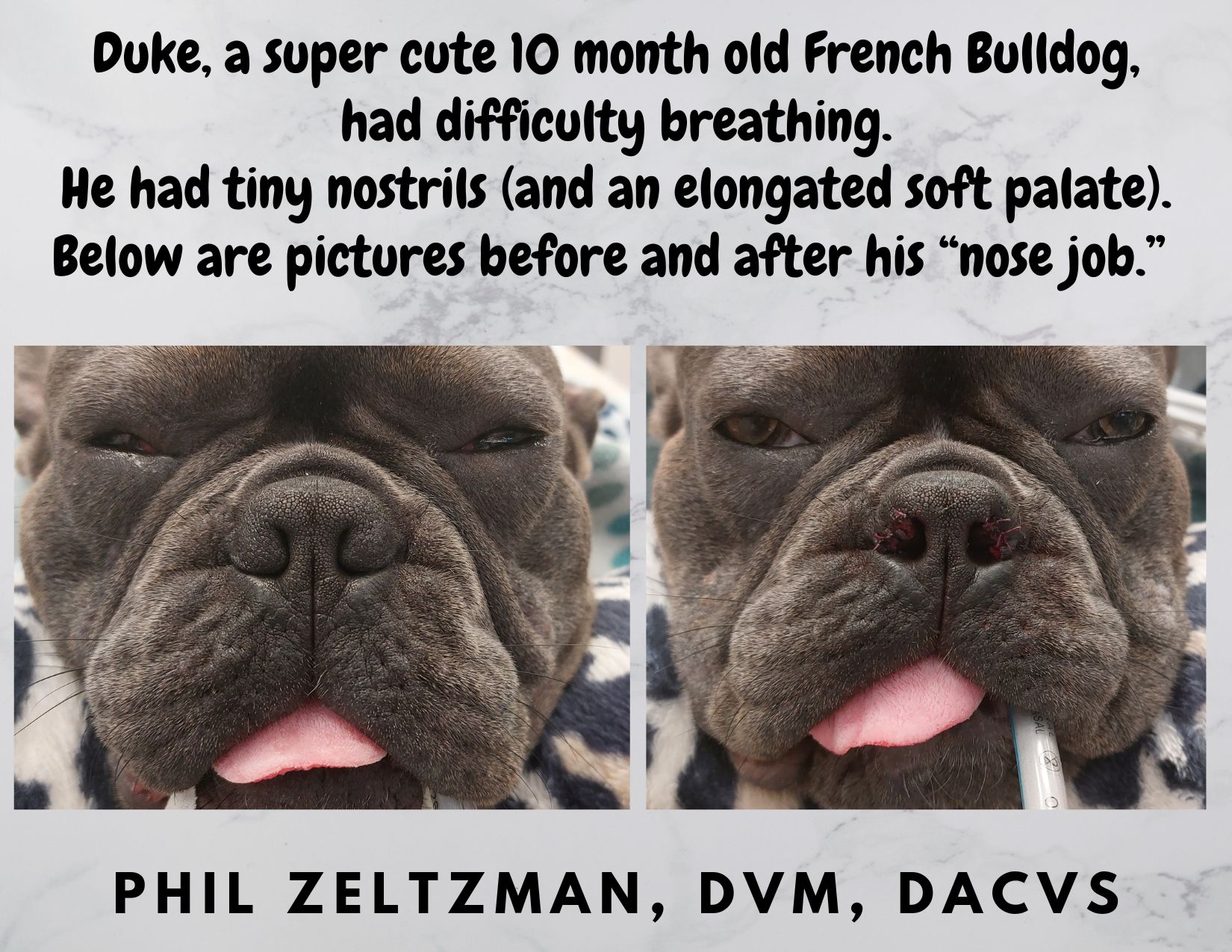A new year is a perfect opportunity to reflect on our top 10 surgeries last year at LRVSS.

Here they are, starting with the most common:
1. TPLO surgery
No doubt, we perform a huge number of TPLOs (Tibial Plateau Leveling Osteotomy) to address a torn ACL in dogs.
It is typically performed in heavier patients (say 40 lbs and over).
But thinking TPLO is only for big dogs would be a misconception.
The most important factor is an angle at the top of the shin bone (the limit is usually 35 degrees).
If it’s too steep, then a TPLO will give better results than other surgeries… which could fail because they don’t address the cause of the problem.
This was the case with Molly, a 14 lb Yorkie, our smallest TPLO patient last year.
Her angle was 35º, which is very steep.
In fact, it’s at the high end of the range for a TPLO. See below for more info about what we do when the angle is above 35º.

2. Lumps and bumps
We have removed masses from virtually every body part last year: under the skin (legs, chest, neck, etc.), near the anus, inside the rectum, in the intestine, in the armpit, in the throat, in a lung, etc.
Most masses were cancerous, and a few were benign.
3. ACL (part 2)
In smaller dogs who do not have a steep angle at the top of the shin bone, we can use the “traditional” technique, which requires heavy nylon sutures to “replace” the ACL.
In patients (of any size) who have an angle above 35º, we use another technique called a TWO (Tibial Wedge Osteotomy) or CWO (Closing Wedge Osteotomy).
The general concept is similar to a TPLO, in the fact that we cut the shin bone and hold the pieces together with a stainless-steel plate.
Some patients had 40, 45, 50º angles.
Our all-time record last year was Mei, a sweet 2 year old Lab mix, whose angles were around 60º!
4. Orthopedic surgery
Our next group encompasses a variety of orthopedic surgeries:
. OCD of the shoulder – to remove a flap of cartilage that hurts like a pebble in your shoe.
. Leg amputation, most commonly because of cancer in the leg, often bone cancer. Occasionally, it is done because of severe trauma or fractures.
. Elbow dysplasia surgery (again, to remove pieces of bone or cartilage that act as a pebble in your shoe).
. Surgery to reconstruct a severed Achilles tendon (above the “heel”).
5. Kneecap dislocation
The kneecap is supposed to slide up and down in a deep groove at the bottom of the thigh bone (or femur).
When it pops in and out, it damages the cartilage and leads to arthritis and pain.
It is common in dogs, and we’ve seen a few kitties with that condition.
A dislocated kneecap can sometimes lead to a torn ACL – a double whammy.
6. Fractures
Our most common fracture last year involved the radius and ulna, the bones of the forearm.
It’s a common injury in small dogs who jump from their owner’s arms or off the couch.
We also repaired multiple fractures in other bones, most often after cats and dogs were hit by a car.

7. Hip fracture or dislocation
The hip is a “ball and socket” joint.
When the ball is dislocated or fractured, a common procedure is to remove the “ball”, aka the femoral head, during a surgery called a Femoral Head Ostectomy (FHO)
FHO is also done in pets with hip dysplasia or because of deterioration of the “ball” (Legg Perthes disease).
Intensive physical therapy is needed after an FHO.
8. Reconstructive surgery
This is a diverse group of surgeries, including:
. tail amputation (e.g. because of a tumor)
. Perineal urethrostomy in cats. Male cats can have a blockage at the end of the urethra, which is the very narrow tube between the bladder and the outside world. When a cat gets “blocked” several times, a Perineal Urethrostomy or P/U can be performed to widen the end of the urethra.
. Penile amputation in a dog with severe trauma to the penis.
. TECA, a procedure to treat tumors or end-stage ear infections.
. “Nose job.” Brachycephalic dogs have a flat face (e.g. Bulldogs) and commonly struggle to breathe. Surgery entails widening the nostrils, shortening the “elongated” soft palate, and sometimes removing fleshy “saccules” from the larynx or voice box.

9. Laryngeal paralysis
Speaking of voice box…
Dogs, mostly Labs, can have a condition that paralyzes their larynx, aka voice box.
It’s a very stressful condition, and tie-back surgery allows them to have a bigger airway, which can dramatically improve their quality of life.
These patients go from suffocating to being able to breathe comfortably.
10. Belly surgery
Also called exploratory laparotomy, it can be done for several reasons: removing body parts (tumors, benign or cancerous), taking biopsies, removing bladder stones, removing foreign bodies, etc.
This little year-end exercise is very interesting to me. It helps me look at what we do all day.
And it’s a tribute to our referring vets, our clients, our patients, and our amazing nurses.
Here’s to a wonderful New Year.
If you would like to learn how we can help your pet with safe surgery and anesthesia, please contact us through www.LRVSS.com
Never miss a blog by subscribing here: www.LRVSS.com/blog
Phil Zeltzman, DVM, DACVS, CVJ, Fear Free Certified
